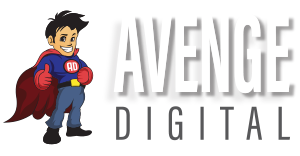
Insurers are thinking of automation and talent investments as intertwined facets of their business, all while considering inflation and the overall landscape in an election year.
Automation and the use of more digital solutions post pandemic has continued. Harnessing the potential of automation requires insurers to make strategic investments in their technology and people. Using machine learning and automated systems can specifically can provide flexibility that allows insurers to innovate and transform faster in key business areas such as inbound marketing, underwriting, policy services or claims management, while attracting and retaining talent by providing more meaningful work. Insurance companies that want to thrive in the future need to think of technology and talent investments as intertwined, symbiotic facets of their business.
More and more insurers are leveraging AI to meet changing customer demands. Insurers are also using AI to create automated workflows, leveraging data and algorithms to automate risk management tasks like recognizing underwriting risks and detecting fraud more effectively. Some insurers, for instance, are leveraging AI’s natural language processing and advanced analytics capabilities to extract pertinent risk information from emails, enabling them to identify underwriting risks and optimize the customer experience. By integrating insights from advanced data sources such as smart devices, wearables, telematics, and other connected technologies, insurers can create a single source of truth to deliver a personalized customer experience while optimizing internal business value.
When looking at the overall landscape, the marketplace can seem like a minefield this fall...
Inflation
Inflation and supply chain challenges have wreaked havoc on the automotive market for the past couple years, and all signs point to those troubles continuing at least through the end of the year.
Beginning with the shortage of semiconductors sparked by COVID-19 lockdowns across the globe, the production lines for new vehicles grounded to a crawl, and in some cases halted altogether. Without new vehicles rolling off the production line, many car lots stood with a fraction of their normal inventory, giving dealers little incentive to mark down the inventory it did have.
The dearth of options on the dealership floors meant that sales for used vehicles went through the roof, driving down inventory and driving up prices.
For auto insurers, that meant that it cost more to replace vehicles that were totaled. And the supply-chain-sparked shortages in spare parts meant that even repairing vehicles after an accident cost more.
There is a glimmer of hope, used vehicle sales are actually projected to decline 12% year over year, meaning the run on used vehicles may be subsiding, potentially leading to lower costs eventually.
But from an insurer’s standpoint, the financial damage has been largely baked in. Many insurers have already approached their state regulators to propose higher premiums to help recover some of those larger expenses they have already incurred. And while they are seeing pushback from insurance commissioners, most industry observers agree that double digit rate increases could be on the horizon.
Higher rates could lead to more consumers shopping around for less expensive auto policies, but according to the most recent Personal Lines Insurance Trends and Perspectives report by TransUnion, shopping for auto insurance by most demographics is still relatively sparce.
Similar to auto insurance, homeowner’s insurance is also facing inflationary pressures, as rising housing costs mean premiums need to also go up to account for the higher valuations, and more expensive building materials and labor shortages mean more expensive repairs after a loss.
Inflation Reduction Act
One undeniable result of the Inflation Reduction Act is that health insurance is going to be impacted in major ways.
One immediate action was to extend Affordable Care Act subsidies that were otherwise set to expire at the end of this year. The act also granted Medicare permission to begin negotiating prices on 20 prescription drugs — though that process won’t begin until 2023, and even then, they won’t be able to negotiate on all 20 all at once. The ultimate savings from those negotiations will largely hinge on which specific drugs get included in the negotiations.
Also in 2023, the act will cap out-of-pocket insulin costs for Medicare enrollees at $35 per month. It will also require pharmaceutical companies to pay rebates if their drug prices rise faster than inflation.
Also beginning in 2023, the act will end cost sharing for Medicare and Medicaid patients receiving vaccines, which would include things like a shingles or monkey pox vaccine.
Beginning in 2025 the act will cap out-of-pocket prescription costs to $2,000 annually for people with Medicare.
Many of these changes will be rolled out gradually, but in the end, many households could stand to save substantial sums if everything works as intended.
Fall Vacations

If all that news is just too much to process, then a fall vacation may be in order.
Many destinations are back open, but airlines continue to struggle with canceled and delayed flights and lost baggage. For that, many travelers are turning to travel insurance, where potential market for travel insurance is poised to grow tenfold by 2030.
Conclusion
With the Inflation Reduction Act’s changes to Marketplace Plans and Medicare, and with potential rate increases on the rise in 2023, this fall may be a season of change for the insurance industry. Add the turmoil in the auto industry, and there are a lot of outstanding questions left to be answered. Due to this, now is the time for agencies to get their automation and teams ready for a strong 2023 start, and use this time to evaluate new inbound marketing vendors, CRMs, and systems while engaging in ongoing education with their producers.






